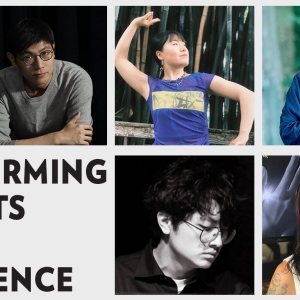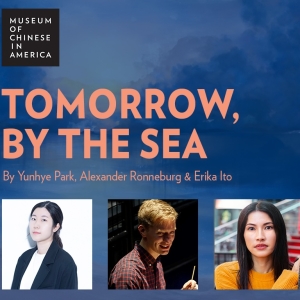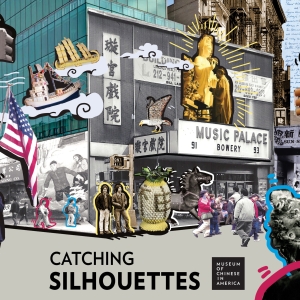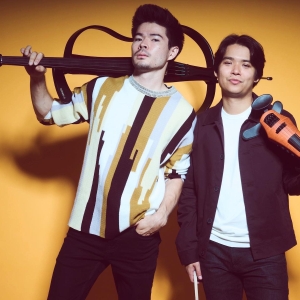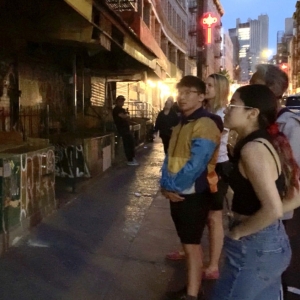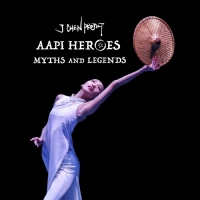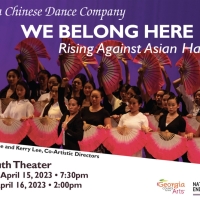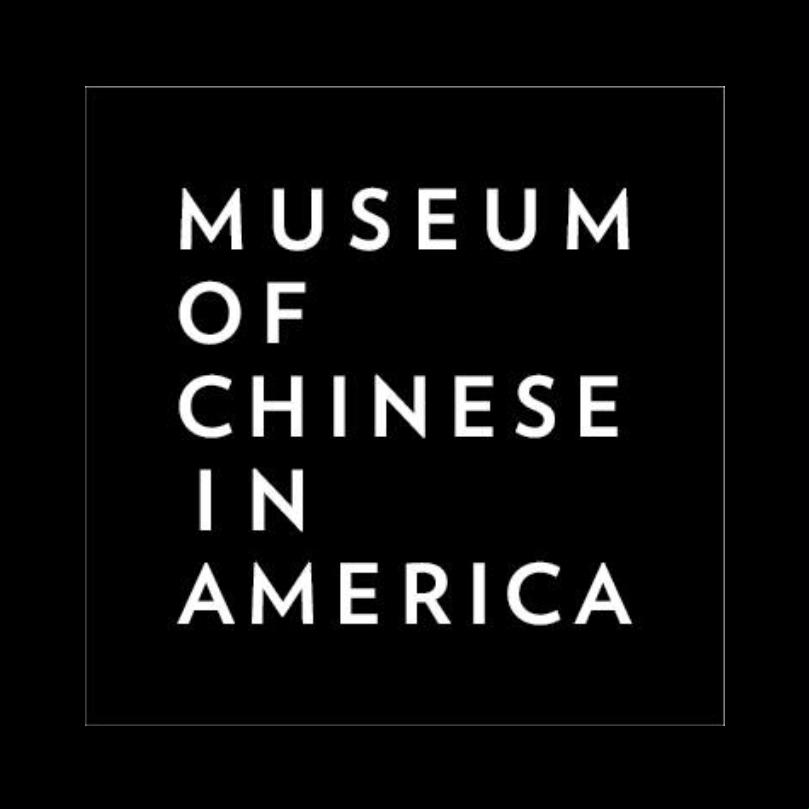
At a Glance
Time Needed: 90 min.
Ages: All
Allows Food/Drink: No
Luggage Storage: No
215 Centre St, New York, NY 10013 Get Directions
Museum of Chinese in America Videos
The Museum of Chinese in America (MOCA) cordially invites you to join an insightful discussion with Thomas S. Mullaney, Professor of Chinese History at Stanford University and author of The Chinese Computer: A Global History of the Information Age. This event will uncover the fascinating, untold story of how the Chinese language overcame unparalleled challenges and revolutionized the world of computing. A standard QWERTY keyboard has a few dozen keys. How can Chinese—a language with tens of thousands of characters and no alphabet—be input on such a device? In The Chinese Computer, Mullaney sets out to resolve this paradox, discovering that the key to this seemingly impossible riddle has given rise to a new epoch in the history of writing—a form of writing he calls “hypography.” Based on fifteen years of research, this pathbreaking history charts the beginnings of electronic Chinese technology in the wake of World War II and traces its many iterations to the present day. Mullaney takes readers through the evolution of Chinese language computing technology, highlighting the development of electronic Chinese input methods—software programs that enable Chinese characters to be produced using alphanumeric symbols—and their profound impact on the way Chinese is written. Along the way, Mullaney introduces a cast of brilliant and eccentric personalities from IBM, MIT, the CIA, the Pentagon, the Taiwanese military, and the highest ranks of the mainland Chinese establishment, exploring the unexpected roles they played in developing Chinese language computing. He also illustrates how China and the non-Western world, through the hypographic technologies they invented, helped the Western computer overcome its inherent biases and achieve a meaningful presence in markets outside the Americas and Europe. The conversation will be moderated by Herb Tam, MOCA’s Curator and Director of Exhibitions. Join us for this captivating discussion that explores the dynamic interplay between culture and technology.
The Museum of Chinese in America proudly supports the creative journey of generative artists in the development of new works. In this spirit, we are honored to present Standing Above Pajaro, a poignant new opera composed by Jeremy Rafal based on the original play by Conrad A. Panganiban. Returning to MOCA with this evocative piece, Rafal delves into a turbulent chapter of American history, offering a narrative that resonates deeply with contemporary issues of immigration, identity, and the human capacity for empathy. Set against the backdrop of 1930s Watsonville, California, Standing Above Pajaro unfolds on a desperate early morning when Celestino Tobera, a Filipino farm worker, seeks refuge in a general store, fleeing an enraged mob intent on eradicating the Filipino community. The store’s owner, Melissa Anne Crawley, is faced with a heart-wrenching decision: protect Celestino or align with her son, who leads the violent mob. Through powerful music and compelling storytelling, Standing Above Pajaro explores the collision between anti-Asian violence and the pursuit of the American Dream. It challenges audiences to reflect on the question: “What will it take to create empathy for immigrants seeking better opportunities and the willingness to help them?” This program is supported by Museum of Chinese in America’s Creative Space Initiative. ---- STANDING ABOVE PAJARO A Filipino-American Imagined Opera Inspired by the 1930 Watsonville Riots Original Story and Libretto by Conrad A. Panganiban Music by Jeremy Rafal Directed by Dennis Yueh-Yeh Li Featuring Joachim Luis, Laura Virella, Billy Huyler Stage management by A. Kasper Dramaturgy by Jay Qun Green Content warning: racial violence and domestic violence are described but not depicted throughout this performance. Viewer discretion is advised.
MOCA hosted an insightful discussion with Dr. Melody Yunzi Li, Assistant Professor in Chinese Studies at the University of Houston and author of "Transpacific Cartographies: Narrating the Contemporary Chinese Diaspora in the United States." This event explored how contemporary Chinese diasporic narratives address the existential loss of home for immigrant communities at a time of global precarity and amid rising Sino-US tensions. Dr. Li highlighted cultural productions of the Chinese diaspora from the 1990s to the present, including novels by Sinophone writers Yan Geling (The Criminal Lu Yanshi), Shi Yu (New York Lover), Chen Qian (Listen to the Caged Bird Sing), and Rong Rong (Notes of a Couple), as well as Anglophone writer Ha Jin (A Free Life; A Map of Betrayal), and selected TV shows (Beijinger in New York; The Way We Were). Dr. Li argued that the characters in these stories create multilayered maps that transcend territorial boundaries, making the search for a home in a foreign land a seemingly impossible task. These “maps” outline a transpacific landscape reflecting the psycho-geography of homemaking for diasporic communities, offering readers diverse paths to finding a sense of home no matter where they are. The conversation featured Carah Naseem, Associate Editor at Rutgers University Press, and was moderated by Yifan Wu, MOCA’s Director of Programs.
MOCA hosted a virtual discussion with scholars Sam Wong and Evelyn Wong, who delved into the life and legacy of Kuang Qizhao. Kuang was the first Chinese person to write a Chinese-English dictionary and served as the official translator for the Chinese Educational Mission (CEM) in Hartford, Connecticut, from 1874 to 1882. The CEM marked the first instance of the Qing government sending students abroad to learn from the United States. During his time in Hartford, Kuang interacted with a diverse array of Americans, including Mark Twain and Ulysses S. Grant, forming close friendships with many intellectuals in Connecticut. These relationships influenced his reform ideas, particularly the importance of Western education for China’s modernization. Kuang was an early and vocal defender of Chinese immigrants in the U.S., particularly outraged by the racism and false claims of Chinese inferiority propagated by demagogues and the American press. He wrote numerous letters to major newspapers and lobbied congressmen to oppose the Chinese Exclusion Act. In 1881, Kuang published A Dictionary of English Phrases, surprising many Americans that a Chinese immigrant compiled a dictionary to teach them their own language. Kuang’s and the CEM’s interactions with Americans also indirectly impacted American literature, especially Mark Twain. Recent scholarship suggests that Twain’s willingness to confront hypocrisy and racism was influenced by his interactions with Kuang and other CEM students. The discussion highlighted specific examples of Kuang’s influence on Twain’s work, including the overlooked play Ah Sin and the most famous novels The Adventures of Huckleberry Finn and A Connecticut Yankee in King Arthur’s Court. In light of current U.S.-China relations, Kuang’s experiences with Chinese exclusion laws are particularly relevant to Chinese Americans today.
In partnership with the Asian American / Asian Research Institute – CUNY, poet and editor Russell C. Leong read from MothSutra, a collection of drawings and poetry about an Asian delivery man who rides a bicycle throughout Manhattan as he “cycles through his life from East to West.” Leong aims to evoke the inner lives, meditations, hopes, and dreams of individuals generally invisible to those who order “takeout.” MothSutra was first presented at the Bowery Poetry Club, the University of Hong Kong Black Box Theatre, and the City University of New York. He was introduced via video by the late Chinese American labor historian, Peter Kwong.
The Museum of Chinese in America (MOCA) recently announced a new speaker series, MOCA Forum, featuring prominent Chinese Americans working within the U.S. government. This series aims to delve into critical historical and contemporary issues concerning Asian American, Native Hawaiian, and Pacific Islanders (AANHPI), with a particular focus on legislative actions affecting these communities. From the Chinese Exclusion Act and Japanese incarceration to recent hate crimes, we will host discussions surrounding significant historical moments and explore the evolving role of AANHPIs within the broader context of American history. The inaugural event was held on May 31, 2024, at MOCA. It featured Ambassador Christopher P. Lu, Congressmember Grace Meng, and Congressmember Mark Takano, and was moderated by Scott Wong, Senior Congressional Reporter at NBC News.
More in Chinatown
More Museums
- The Tenement Museum
- New Museum
- International Center of Photography
- Museum at Eldridge Street
- National Museum of the American Indian
- National September 11 Memorial & Museum
- The Rubin Museum of Art
- Whitney Museum of American Art
- The Morgan Library & Museum
- Museum of Modern Art (MoMA)
Museum of Chinese in America Frequently Asked Questions
The closest subway stops to the Museum of Chinese in America (MOCA) at 215 Centre St in New York City are:
1. Canal Street Station: This station is served by the J, N, Q, R, W, Z, and 6 trains. It is located just a short walk away from MOCA.
2. Grand Street Station: This station is served by the B and D trains. It is also within walking distance of the museum.
Both of these subway stations are conveniently located and will make it easy for you to reach MOCA.
While you're in the area, I recommend exploring the vibrant neighborhood of Chinatown. You can take a stroll through the bustling streets, browse the markets, and sample delicious Chinese cuisine.
Here are a few recommendations for restaurants in Chinatown:
1. Nom Wah Tea Parlor: This historic dim sum restaurant has been serving delicious dumplings since 1920. Don't miss their famous shrimp dumplings and pork buns. [Nom Wah Tea Parlor](https://nomwah.com/)
2. Joe's Shanghai: Known for their soup dumplings, Joe's Shanghai is a popular spot for authentic Chinese cuisine. Be prepared for a wait, as it can get crowded. [Joe's Shanghai](http://www.joeshanghairestaurants.com/)
3. Xi'an Famous Foods: If you're in the mood for spicy and flavorful dishes, Xi'an Famous Foods is a must-visit. Try their hand-pulled noodles and cumin-spiced lamb burgers. [Xi'an Famous Foods](https://www.xianfoods.com/)
Make sure to check the MTA website for any subway updates or changes in service before you travel. You can find the latest information [here](http://www.mta.info/). Enjoy your visit to MOCA and your time in Chinatown!
The Museum of Chinese in America (MOCA) is located at 215 Centre St in New York City. The closest bus stops to the museum are:
1. Centre St/Grand St: This bus stop is served by the M9 bus. You can check for updates on the M9 bus schedule [here](http://bustime.mta.info/m/index;jsessionid=9C6F8A0D8C0A5F6D9F7B9C5A7F2D6F5D?q=402053).
2. Centre St/Broome St: This bus stop is served by the M103 bus. You can check for updates on the M103 bus schedule [here](http://bustime.mta.info/m/index;jsessionid=9C6F8A0D8C0A5F6D9F7B9C5A7F2D6F5D?q=402052).
Please note that bus schedules are subject to change, so it's always a good idea to check for updates closer to your visit. Enjoy your time at the Museum of Chinese in America!
The ideal length of time to plan for a visit to the Museum of Chinese in America (MOCA) in New York City depends on your level of interest in Chinese history and culture. On average, visitors spend about 1 to 2 hours exploring the museum's exhibits and galleries.
If you have a general interest in Chinese culture and history, allocating 1 to 1.5 hours should give you enough time to see the main highlights and get a good overview of the museum's collection. This includes exploring the permanent exhibits that showcase Chinese-American history, art, and artifacts.
However, if you have a specific interest in Chinese history or if you enjoy delving deeper into museum exhibits, you may want to allocate a bit more time. Spending 2 hours or more will allow you to thoroughly explore the museum, read the detailed information provided, and engage with interactive displays.
Additionally, MOCA often hosts special exhibitions and events, so if there is something specific you want to see or participate in, it's worth checking their website or calling ahead to plan your visit accordingly.
Remember, the ideal length of time can vary from person to person, so feel free to adjust your visit based on your own interests and schedule. Enjoy your time at the Museum of Chinese in America!
The Museum of Chinese in America (MOCA) in New York City does not have a specific food or drink policy. However, it is always a good idea to check with the museum staff before bringing any food or drinks inside. In general, most museums prefer that visitors refrain from consuming food or beverages in exhibition areas to help preserve the artwork and artifacts on display. MOCA does have a gift shop where you can find snacks and drinks if you need a quick refreshment during your visit.
The Museum of Chinese in America (MOCA) in New York City does not have a luggage storage facility on-site. However, there are several options available nearby where you can securely store your belongings while you visit the museum.
One convenient option is to use a luggage storage service. There are various companies in the city that offer this service, allowing you to drop off your bags at a designated location and pick them up later. Some popular luggage storage services include LuggageHero, Vertoe, and Schwartz Luggage Storage. These services typically have multiple locations throughout the city, including near popular tourist attractions like MOCA.
Another option is to check if your hotel offers luggage storage for its guests. Many hotels in New York City have this service, allowing you to store your bags with them even if you have already checked out. If you are staying at a hotel, it's worth contacting the front desk to inquire about their luggage storage policy.
Lastly, if you are traveling with larger suitcases or bags, you may want to consider using a traditional luggage storage facility. These facilities are specifically designed for storing luggage and are often located near transportation hubs like Penn Station or Grand Central Terminal. Some examples of luggage storage facilities in the city include Schwartz Luggage Storage, City CoPilot, and Luggage Keeper.
Remember to always check the specific policies and prices of these services before utilizing them, as they may vary. It's also a good idea to plan ahead and make arrangements for luggage storage to ensure a smooth and hassle-free visit to MOCA and other attractions in the city.
Yes, the Museum of Chinese in America (MOCA) in New York City is definitely worth a visit for visitors from other countries and non-English language speakers. MOCA is dedicated to preserving and presenting the history, heritage, and culture of Chinese Americans. It offers a unique and immersive experience that can be appreciated by people from all backgrounds.
While English is the primary language used in the museum, MOCA strives to make its exhibits accessible to non-English speakers as well. Many of the exhibits feature bilingual signage, providing information in both English and Chinese. Additionally, the museum offers guided tours in multiple languages, including Mandarin, Cantonese, and Spanish. These tours can be a great way for non-English speakers to fully understand and appreciate the exhibits.
MOCA also hosts a variety of cultural programs and events throughout the year, including workshops, performances, and lectures. These events often showcase Chinese arts, crafts, music, and dance, providing a rich cultural experience for visitors.
Overall, the Museum of Chinese in America offers a valuable and engaging experience for visitors from other countries and non-English language speakers. It allows them to learn about the history and contributions of Chinese Americans while immersing themselves in the vibrant culture of New York City.
The Museum of Chinese in America (MOCA) in New York City is a fantastic cultural institution that offers a unique and enriching experience for visitors of all ages. While there is no strict age range recommendation, the museum's exhibits and programs are generally designed to engage and educate visitors of all ages, including children and families.
MOCA offers a variety of exhibits that explore the rich history, art, and culture of Chinese Americans. These exhibits often feature interactive elements, multimedia presentations, and hands-on activities that can be enjoyed by visitors of different ages and interests.
Additionally, the museum regularly organizes family-friendly events and workshops that cater specifically to younger visitors. These events provide a fun and educational experience for children to learn about Chinese American history and culture.
Whether you're a history buff, art enthusiast, or simply curious about the Chinese American experience, the Museum of Chinese in America is a must-visit destination in New York City for visitors of all ages.
Videos



